Yellow chicken breeds stand out among others due to their bright buff and golden plumage, accompanied by white and black or bay color.
They offer various chicken breeds ranging from bantams to giant dual—purpose chickens.
So, if you have a plan stuck for chicken raising, resume it with the following 25 options for different purposes and spaces.
1. Buff Orpington
Buff Orpingtons look stocky, with broad bodies and short backs and legs.
The roosters weigh 8—10 pounds, and hens 6—8 pounds. They take 5—6 months to reach their potential size for processing and breeding.
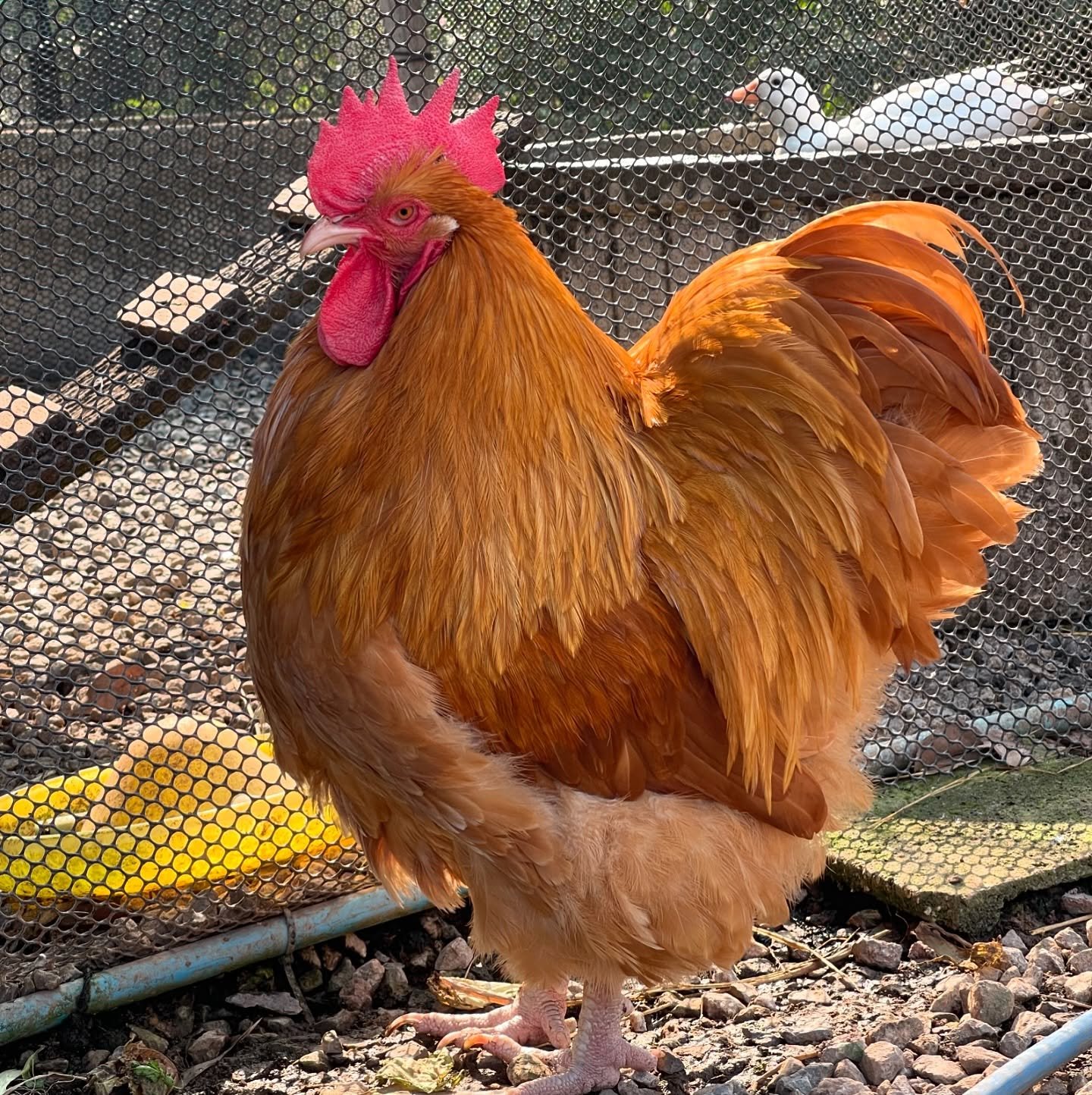
Orpingtons can lay 200— 280 eggs per year.
They prefer cool temperatures and are cold and disease—resistant. The breed dates back to the 19th century and was in the US by 1981.
Origin: England
Temperament: Docile and friendly
Characteristics: Dual-purpose breed, excellent layers of brown eggs, suitable for meat
Ideal for: Beginner-friendly due to their ease of handling
2. Buff Brahma
Do you know Brahmas were the primary meat breed in the US from 1850 to 1930?
You can tell Buff Brahma by their long body, which is attached to deep, wide breasts, and strong, upright back. They are also 30 inches tall.
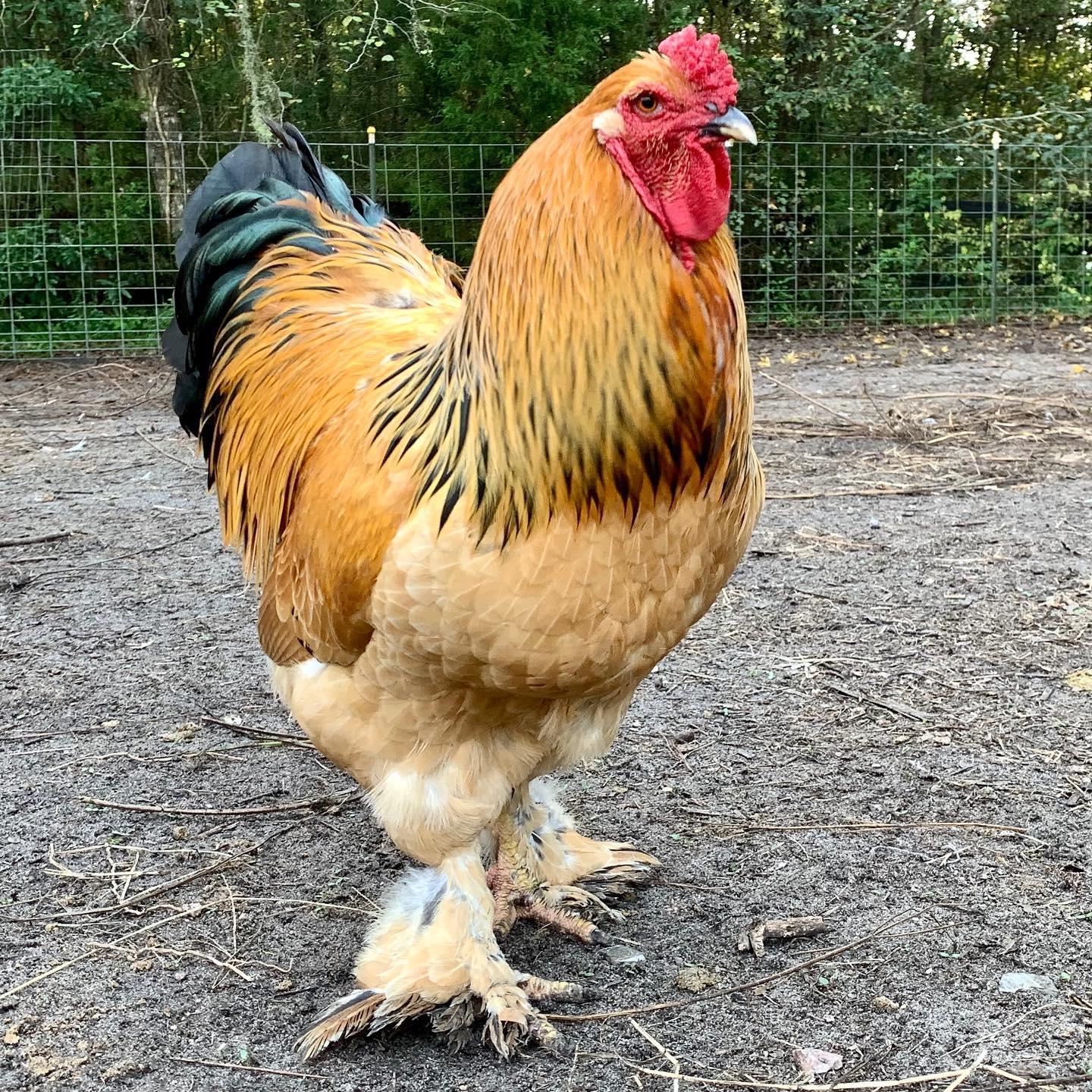
Expect these yellow chicken breeds to weigh 12 pounds for males and 9 pounds for females.
Hens can produce 150—200 large, medium—brown eggs per year. They feel uneasy in hot weather but thrive well in cold temperatures.
Origin: United States
Size and Appearance: Large, feathery legs, yellowish—golden plumage.
Hardiness: Cold-resistant, perfect for colder climates.
Uses: Primarily for meat, though they are decent layers.
3. Yellow Leghorn
Leghorns look more like game birds, with narrow breasts and an upright stance.
They are heat-tolerant and cold-hardy to a certain extent. They are relatively lightweight, with roosters weighing 6 pounds and hens weighing 4.5 pounds.
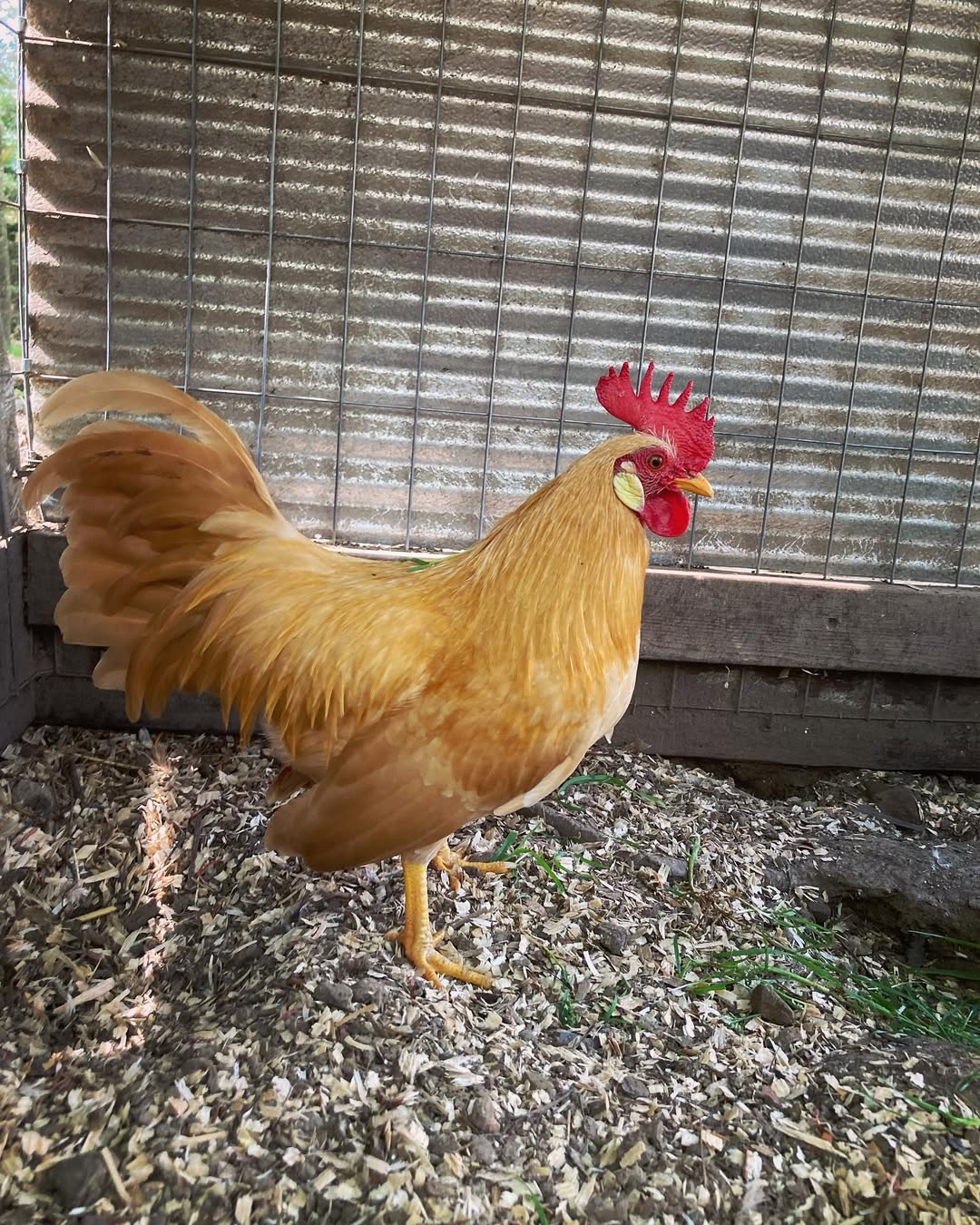
Layers mature within a year and can yield 280—320 eggs yearly, with 5 or 6 eggs weekly.
The breed was exported to the United States around 1828.
Origin: Italy
Traits: High energy, active breed, prolific egg layers of white eggs
Appearance: Light yellow feathers, sleek body
Ideal for: Egg—focused homesteaders
4. Buff Sussex
Sussex chickens were brought to the United States around the early twentieth century.
They are large, broad—bodied birds with roosters weighing 9 pounds and hens 7 pounds.
The breed has an extended, broad, flat back with a long, straight breastbone. You can imagine them with broad shoulders, a rectangular build, and short, close-fitting feathers.
I notice the males having long, thin, pointed saddle feathers and females with rounded, fat saddle feathers.
They can lay 200-250 eggs per year.
Origin: England
Uses: Dual-purpose, excellent for both eggs and meat
Appearance: Buff-yellow feathers with white undercoat
Temperament: Curious and active foragers
5. Buff Cochin
Buff Cochin chickens are a large Asiatic breed that originated in Shanghai and was exported to Europe and America in the 1840s and 1850s.
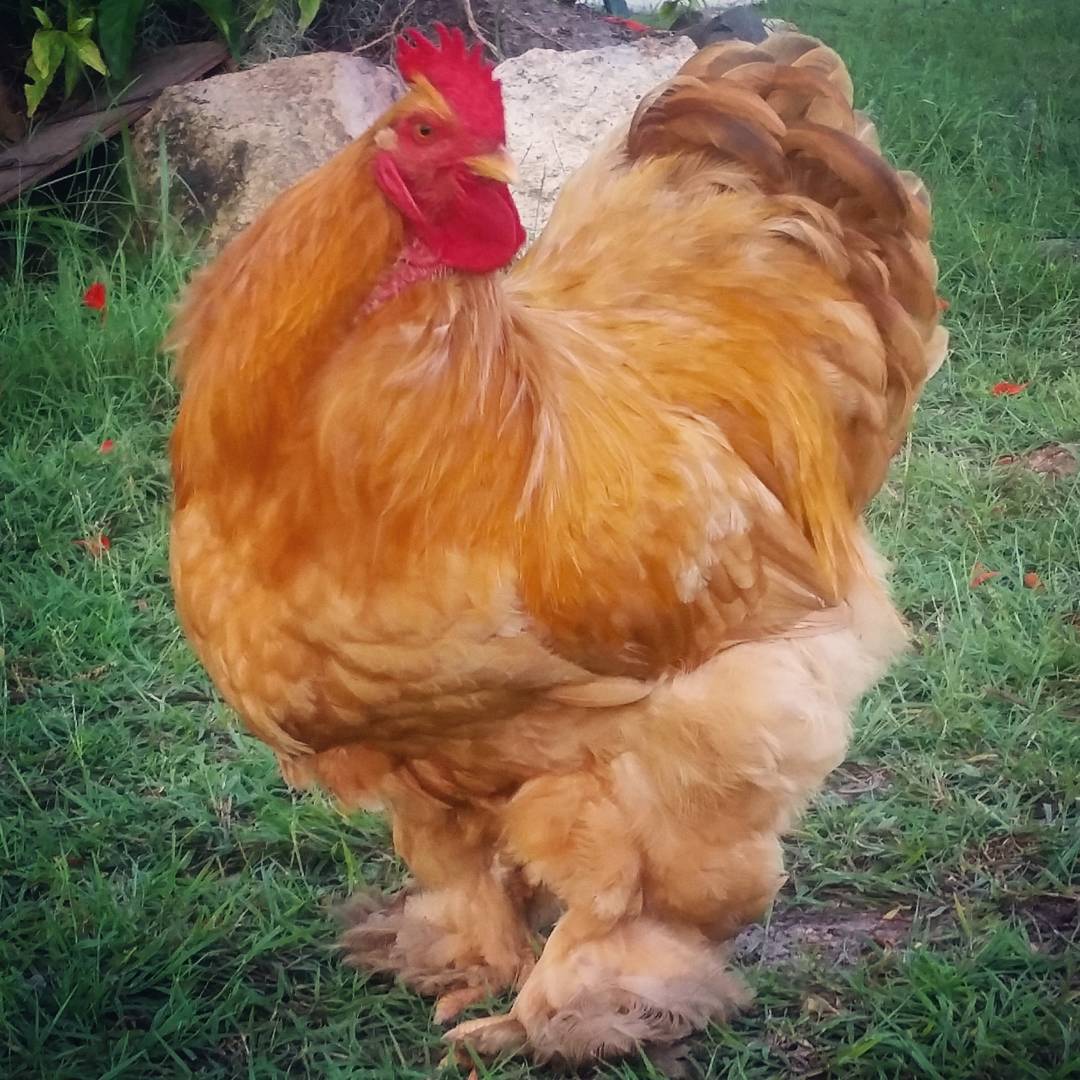
The breed has round bodies with cushions of feathers on their rump and saddle.
This helps give them a curvy back with soft, fluffy, golden feathers from head to toe.
You can expect them to mature in 20 weeks. Adult roosters get 11 pounds, while mature hens get 8.5 pounds. Also, females yield 110—180 medium-large eggs per year.
Origin: China
Characteristics: Large, fluffy build, friendly and broody
Uses: Ornamental and for egg production
Ideal for: Adding charm to backyard flocks
6. Buff Plymouth Rock
These yellow chickens can have 150–280 eggs per year.
They look giant with their body and feathers, weighing 9.5 pounds for males and 8.5 pounds for females.
This breed was found in Massachusetts during the 1840s.
Plymouth Rock has deep, well-set, and broad bodies. But they are smaller in size than other other Rock chickens. Solid and rich win golden-buff plumage, roosters look more lusterful than females.
Origin: United States
Appearance: Buff-colored feathers, big and strongly build
Traits: Hardy, dual-purpose breed (Meat and Egg)
Egg Production: Steady layers of brown eggs
7. Yellow Silkie
Silkies are small chickens ranging from 8 to 10 inches in length. They have a wide, stout body, short back, and rounded, fluffy tail.
They originated at least 1000 years ago in Asia.
Unlike other breeds, Silkies have heavy and fluffy plumage that can get waterlogged. So, you need to warm and dry your small birds.
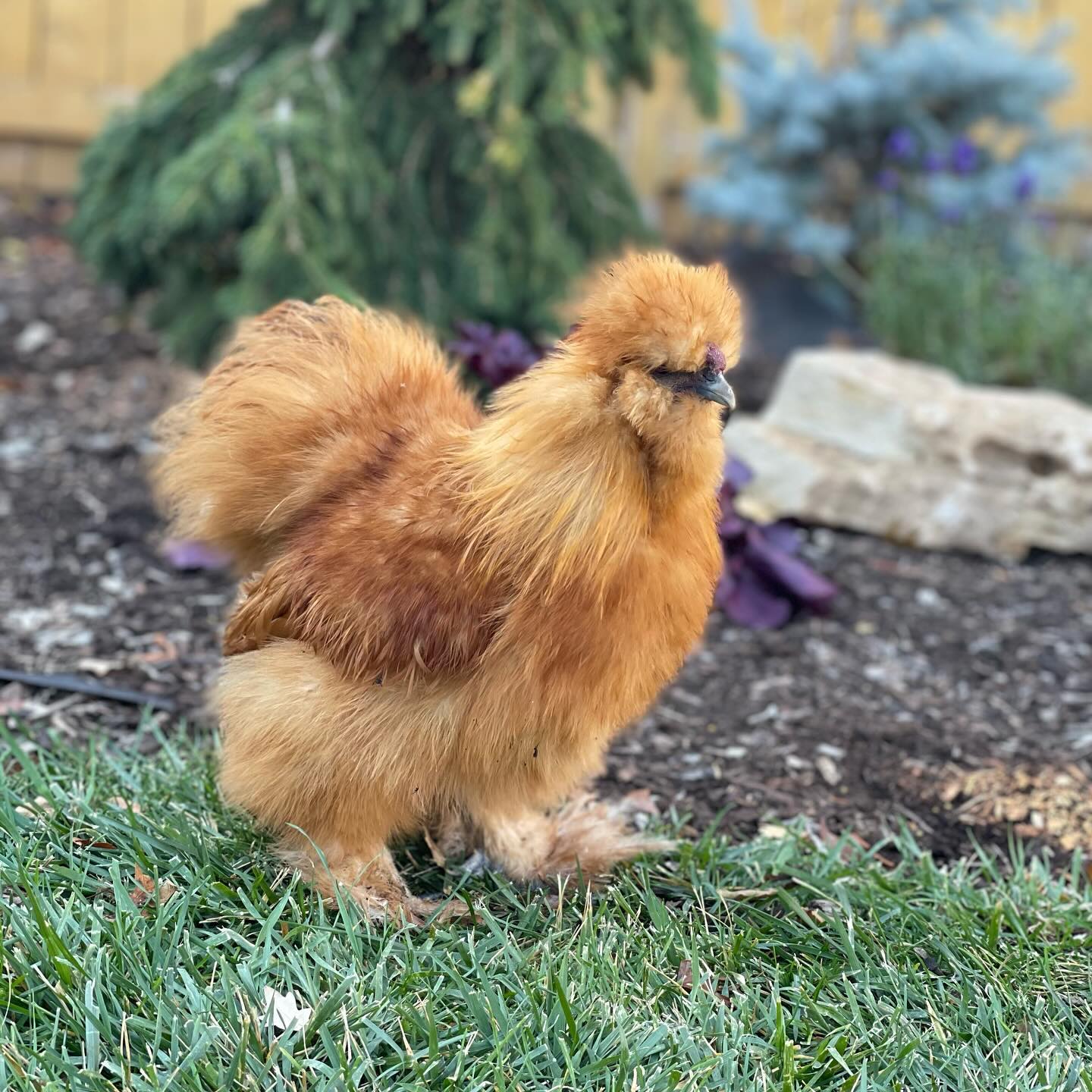
These yellow chicken breeds are a slow grower and get their full size in 3 to 4 months.
Mature Silkies weigh 3–4 pounds and yield 100– 120 eggs per year.
Origin: India/China/Japan
Appearance: Soft, fluffy yellow plumage
Traits: Docile, great for decoration
Uses: Broody hens, good for hatching eggs
8. Buff Chantecler
Though Chanteclers were developed in the early 1900s, the buff color was added during the 1980s.
Buff Chanteclers have long, broad bodies with solid buff. Sometimes, they also possess a few dark brown spots on their heads.
They are slow-growers, usually expected to be processed after 6 months. Males can gain around 9 pounds, while females can grow 7 pounds.
In a year, Chanteclers lay 150- 220 light brown or pinkish eggs.
Origin: Canada
Traits: Cold-hardy, efficient egg layers
Appearance: Buff-yellow feathers, nice compact body
Ideal for: Northern homesteads
9. Buff Wyandotte
Wyandotte chickens are known for being medium-sized birds with short necks, short legs, and well-developed breasts.
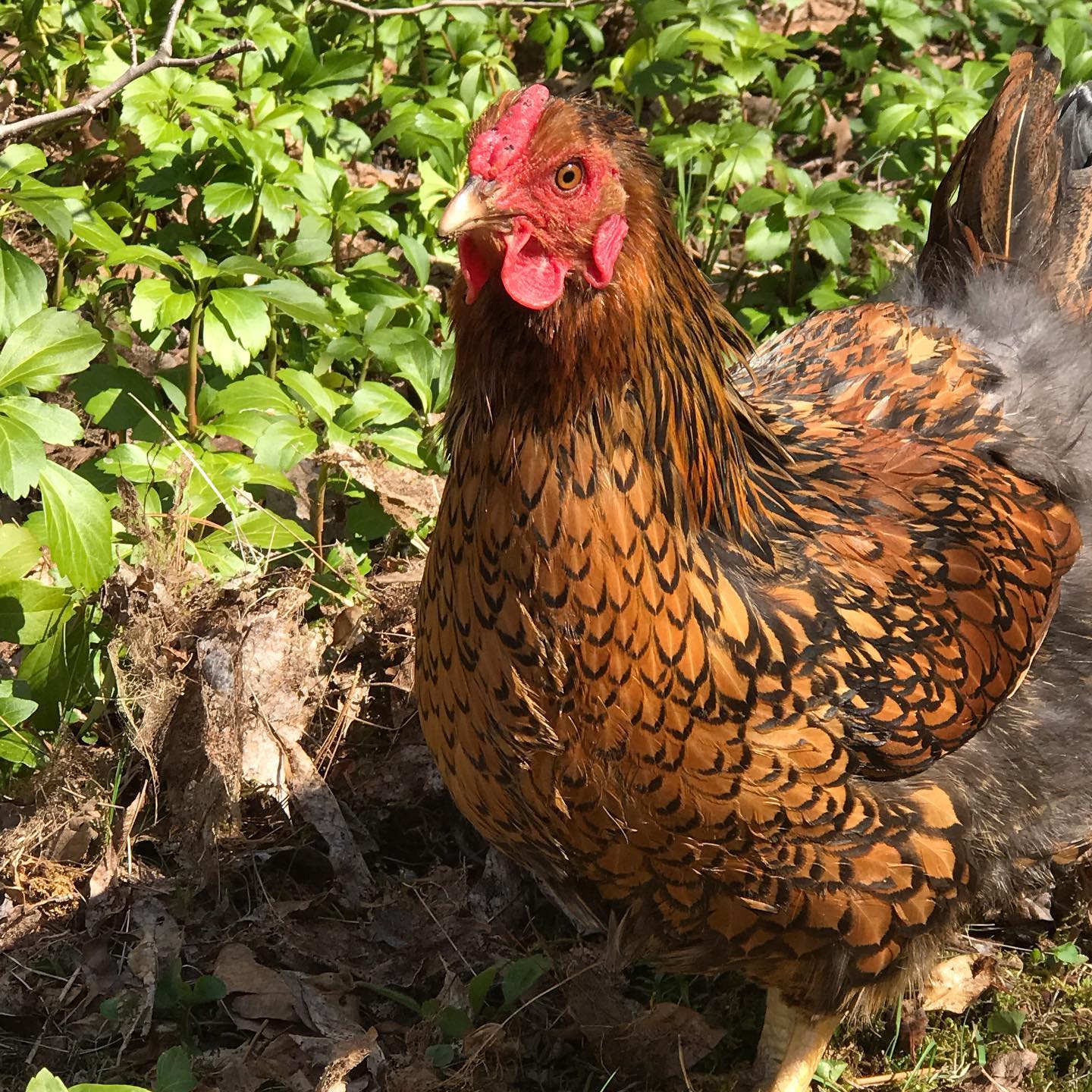
They have a wide head with a low, flat rose comb.
Do you know Buff Wyandotte was admitted as a breed to the American Standard in 1893?
These yellow breeds have 6.5 pounds for a hen and 8.5 pounds for a cock. Hens are good layers with 150 – 200 eggs per year, 4 eggs weekly.
They start laying eggs when they are 4–6 months old.
Origin: United States
Traits: Calm, reliable layers of brown eggs
Appearance: Beautiful golden-yellow plumage with laced patterns
Uses: Dual-purpose breed
10. Buff Minorca
Do you know Minorca chickens originated in Africa and were then exported to Spain?
The US farmers received these chickens in the late 1890s or early 1900s.
Buff Minorcas are known for large combs, and hens’ combs fall to one side, blocking one eye. They also have extended wattle, large white earlobes, and compact, buff plumage.
Hens lay 120—200 white eggs per year but make nonsetter birds.
In their full size, males weigh 9 pounds, and females gain 7.5 pounds.
Origin: Africa
Traits: Excellent layers of large white eggs
Appearance: Light yellow feathers, slim, slender body
Ideal for: Egg production in warm climates
11. Buff Ameraucana
Ameraucana chickens are one of the parent breeds of the Easter Egger chicken.
They have a compact body and wide chest and mature in 4—7 months. Roosters can weigh 6.5 pounds, and hens weigh 5.5 pounds.
Notably, they grow blue legs, which contrasts with their golden buff plumage.
You can expect these yellow chicken breeds to yield 200—250 eggs per year.
Origin: United States
Unique Traits: Lays bluish eggs
Appearance: Buff feathers with unique beard and muffs
Ideal for: Adding variety to egg colors, great for ornamental purposes
12. Buff Polish
Polish chickens were popular in England during the eighteenth century, and then, they shifted their rage to France for egg production.
They start laying eggs around 5—8 months of age. 180—200 small white eggs per year are their laying range.
Buff Polish are a medium-sized breed (4— 6 pounds) with an extended, broad back and a deep breast. Besides, they grow white lacing on a gold cover.
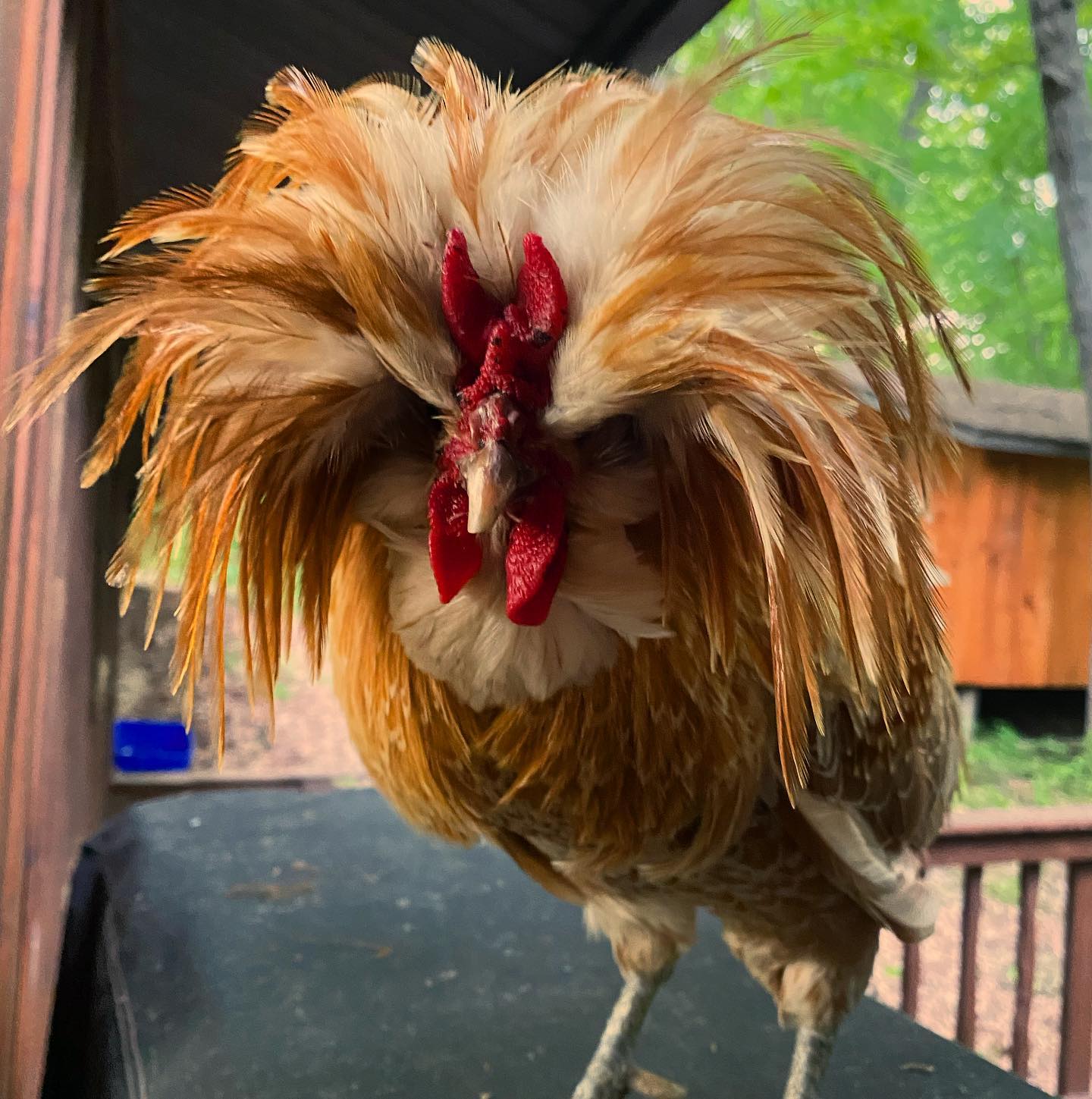
What I like about them is their showy, large, fluffy crest, which grows 8 inches in diameter.
Their crest is a long, flowered feather scattered on the head and neck. Their chin and throat also develop some long and pointed feathers.
Origin: Netherlands
Appearance: Stunning buff crest, slender build
Uses: Ornamental and light egg production
Temperament: Friendly but can be timid
13. Buff Andalusian
This breed is a non-sitter and flighty bird.
They were exported to the United States between 1850 and 1855.
Within 20 weeks, male chickens can weigh 8 pounds, and females weigh 6.5 pounds.
You can tell Buff Andalusian with their small, compact bodies and dark and laced plumage. They are active and densely feathered birds that can be noisy and rarely go broody.
Origin: Spain
Appearance: Sleek yellow feathers, compact but elegant stature
Traits: Active foragers, moderate egg layers
Best suited for free-range setups
14. Buff Naked Neck
As the name suggests, the breed has no feathers on the neck or face. So, the bare areas help butchers pluck easily and quickly.
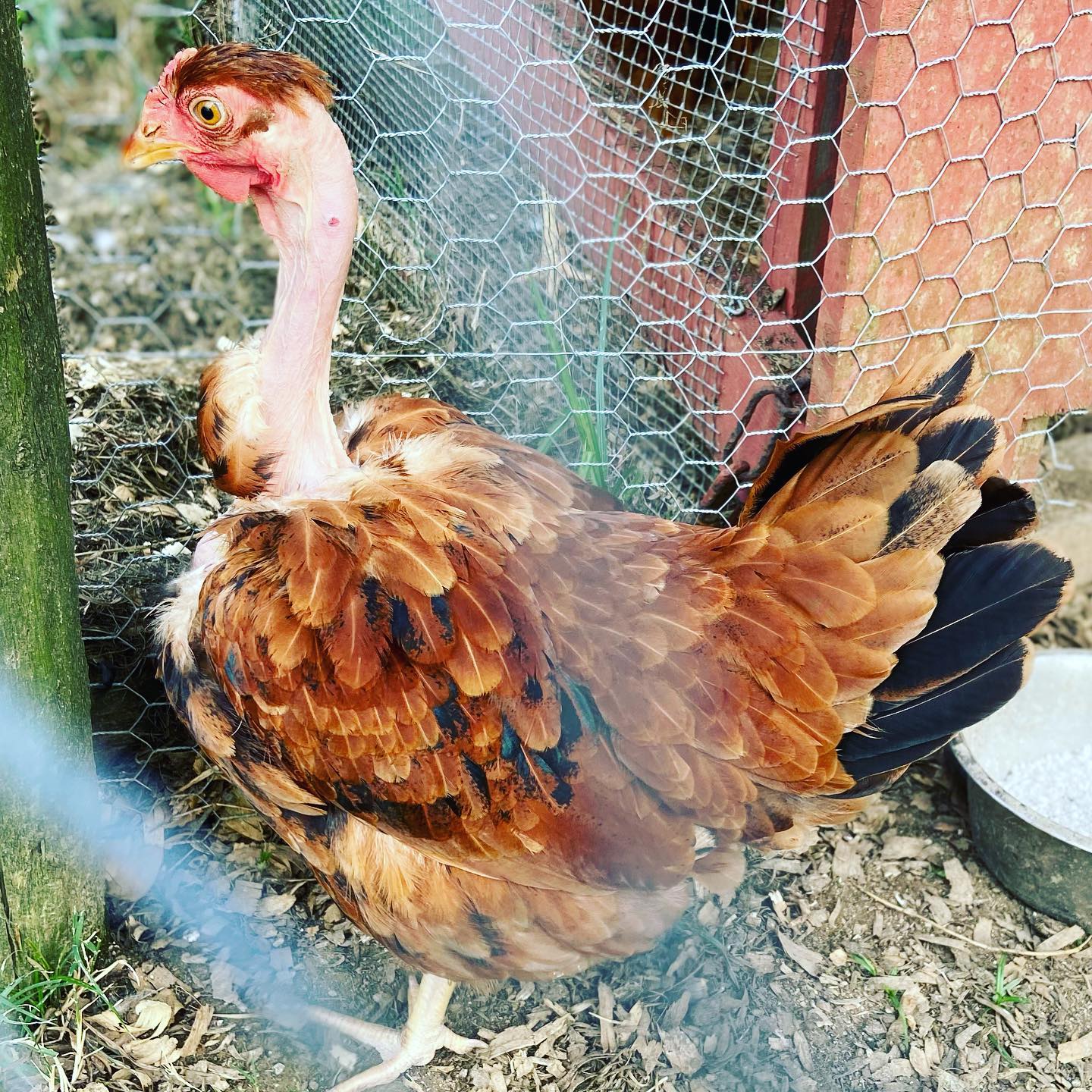
Compared to other fowl breeds, naked neck chickens have less than half the feathers of others.
Their skin turns red in the sunlight, so they look closely related to Turkeys.
Naked Neck can get 8.5-6.5 pounds in their full-size body. They can lay 120-200 medium-large brown eggs per year.
Origin: Transylvania/ Romania
Traits: Hardy, low-maintenance breed
Appearance: Unique featherless neck, less feathers, buff plumage
Ideal for: Heat-prone areas
15. Buff Sasso
Sasso chickens are known for their yellow skin and great flavor. They can get 8—9 pounds during their full size.
These yellow chicken breeds grow broad chests, smaller wings, and a small head.
They have bulky bodies with extended keels and lighter, speckled plumage.
This broiler breed starts laying eggs within the age of 6—8 months. They can yield 120—250 eggs yearly and have a high hatch rate.
Origin: France
Traits: Fast-growing meat breed (good egg layer also)
Appearance: Buff-yellow feathers with a robust body
Ideal for: Homesteaders focused on dual purpose breed
16. New Hampshire Red
I cannot help but need to add this heritage breed due to their brighter red plumage with yellow highlights.
New Hampshire Red are medium-sized meat chickens that weigh 8.5 pounds for males and 6.5 pounds for females.
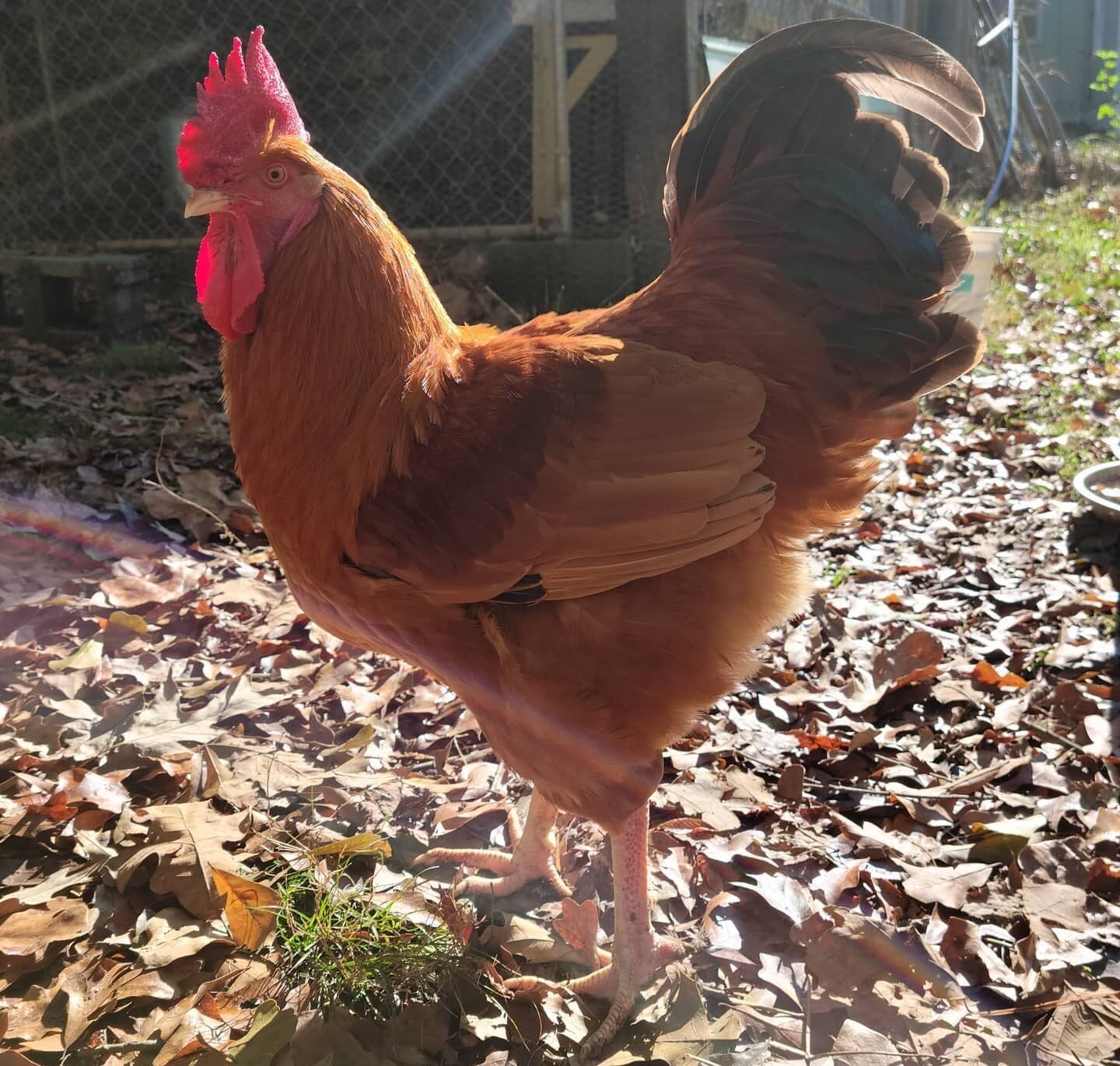
They have a deep, wide body with dense feathers.
One can notice them as more triangular in shape than Rhode Island Red chickens. But they are prone to go broody and make good mothers.
New Hampshire Red chickens are one of the early American breeds that originated in the early twentieth century.
They mature around 5—6 months and lay 200—280 eggs annually.
Origin: United States
Appearance: Buff-yellow to reddish-golden plumage with a sturdy and well-rounded body
Traits: Hardy, fast-growing, and dependable layers
Uses: Eggs and meat (dual-purpose breed)
Ideal for: Homesteaders looking for a reliable and versatile breed for both production and resilience
17. Golden Campine
Do you know Campine chickens arrived in North America for the first time in 1893?
Golden Campines are known for their unique barred feather pattern in black and golden bay.
You can notice the chicks show more colorful bodies with zigzag patterns of brown, black, and white stripes.
Campines are medium-sized chickens weighing 6 pounds for males and 5 pounds for females. They can produce 140—200 white, medium-sized eggs but are non-broody.
Expect them to mature between 16 and 20 weeks of age.
Origin: Belgium
Appearance: Sleek yellow-golden feathers with dark barring
Traits: Active foragers, great for free-range setups
Uses: Light egg layers of white eggs, decoration
Ideal for: Homesteaders looking for a hardy and attractive breed
18. Buff Marans
This breed looks inflated with a wide body, clearly showing the result of feeding.
Marans roosters can grow 22 inches tall and 8 pounds, whereas hens reach 20 inches and 6.5 pounds.
They are covered black with creamy yellow plumage. Some also have white head dots and bellies.
After 5—6 months, they can start laying eggs and can produce 150— 200 eggs a year.
Maran chickens were developed from feral fighting birds in the nineteenth century.
Origin: France
Traits: Lays glossy medium-dark to dark brown egg eggs
Appearance: Buff feathers, calm demeanor
Ideal for: Egg variety and friendliness
19. Buff Frizzle
What I love about Frizzle chickens is their unique feather.
As the name suggests, they have feathers that curl outward and up. It looks as if they are puffballs or in the wind storm, blowing their plumage.
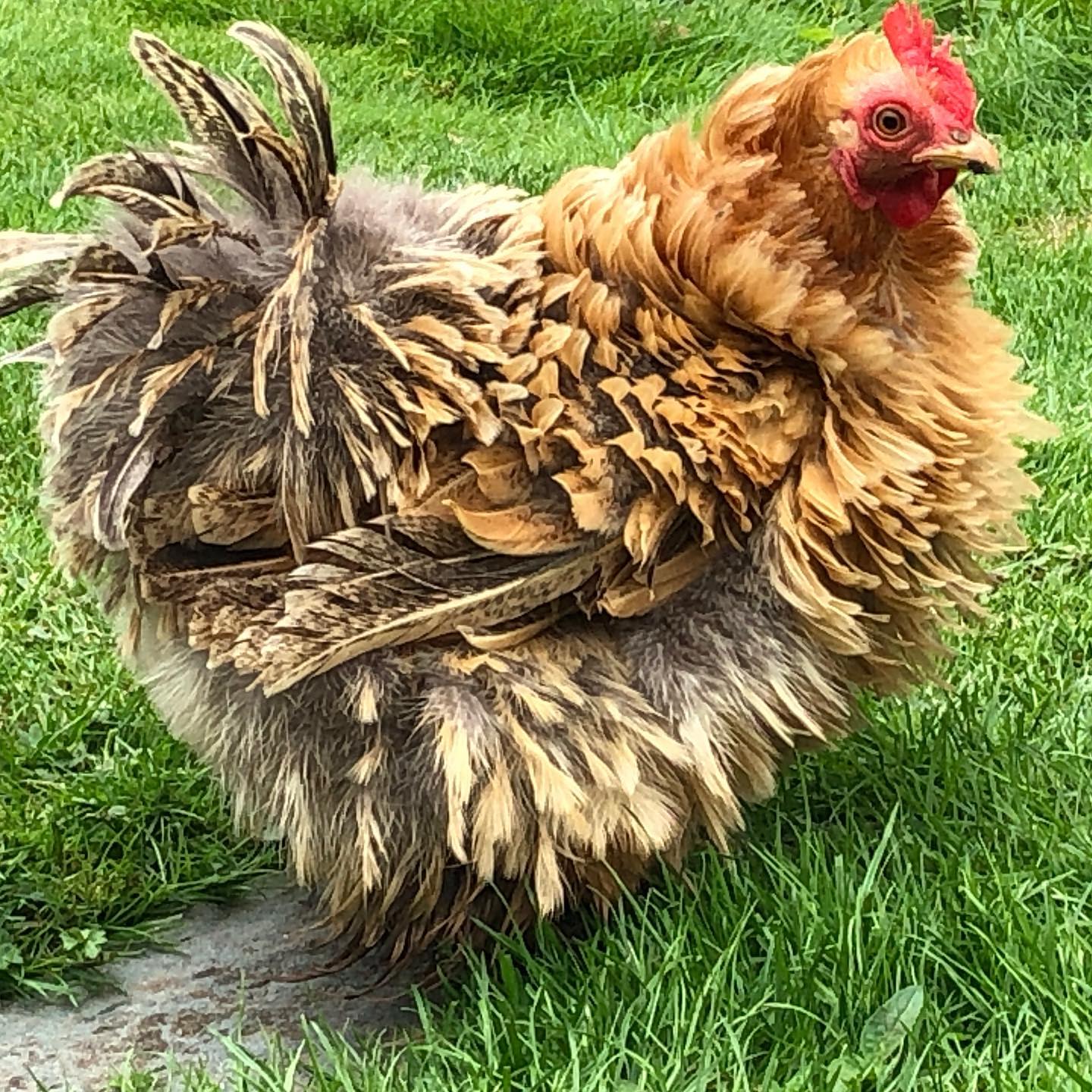
Really cool to watch!
Buff Frizzle has a small and erect body with a full breast, a large tail, and extended wings.
They are docile, gentle, and quiet, weighing 4—6 pounds.
You can expect them to grow in 5—6 months and lay between 120 and 150 eggs per year.
Origin: Various regions (crossbreed)
Appearance: Curly yellow feathers, unique look
Uses: Ornamental and light egg production
Great for homesteads wanting exotic birds
20. Buff Japanese Bantam
This small-looking creature weighs 22—26 ounces.
Japanese Bantam have short legs and arched tail feathers. Their wings grow down and back with each side.
Their unique look adds through upward tails that rise higher than the head.
They are docile chickens and lay 70—150 cream-shelled eggs per year.
Origin: Japan
Size: Small, ornamental breed
Traits: Buff plumage, short legs
Ideal for: Hobbyists and decorative purposes
21. Buff Dutch Bantam
Dutch Bantam are small birds, with males weighing around 20 ounces and females weighing around 18 ounces.
They have high, full breasts and short backs.
These yellow bantam originated in Holland during the 1880s.
Besides, Dutch Bantam make good mothers and go broody quickly. In 20 weeks, they can produce around 160 small white or tinted eggs yearly.
Origin: Netherlands
Traits: Small but good egg layers
Appearance: Buff feathers with compact body size
Great for small spaces
22. Buff Sebright
Originating in around 1800, Sebright chickens are one of the oldest British bantams.
They have full and convex breasts and big wings with short backs. When you closely observe these chickens, they resemble pigeons somewhat.
They carry bay bay-colored ground with sharp black laced all over the plumage.
Buff Serbright can weigh 20—22 ounces and lay about 60—80 small eggs per year.
Origin: England
Appearance: Golden-yellow plumage with black edging
Traits: Ornamental, small in size
Ideal for: Backyard display
23. Lemon Millefleur Sablepoot
These yellow chicken breeds are hardy birds and good foragers.
Lemon Millefleur Sablepoot are also called Booted Bantams that have profuse feathers.
These angular chickens have broad backs, well-developed breasts, and enormous, downward-pointing wings.
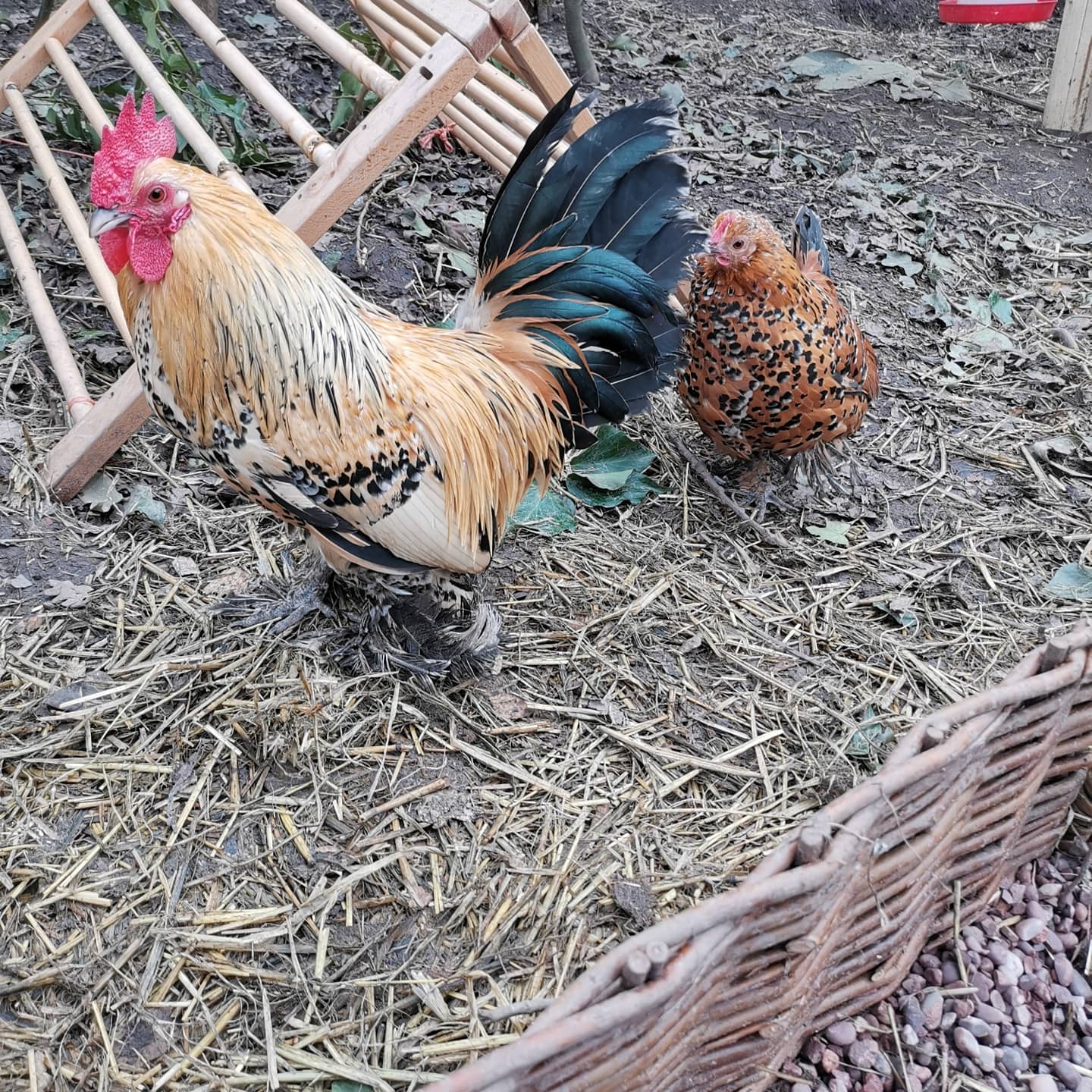
You can expect males to weigh 30 ounces and females 27 ounces. Besides, hens can lay 140—160 small white or cream eggs yearly.
Origin: Netherlands
Appearance: Small size with vibrant lemon-yellow plumage and feathered feet
Traits: Ornamental, friendly, and active
Uses: Decoration and light egg-laying
Ideal for: Homesteaders looking for unique and eye-catching breeds
24. Hungarian Yellow
Hungarian Yellow chickens are known for small, round wattles and red lobes.
They have golden coloring and sandpaper-textured shanks, which help them protect from predators.
Hungarian chickens are medium-sized domestic birds that mature in eight months.
Roosters grow up to 6.6 pounds, while hens reach around 5 pounds, making them medium yellow chicken breeds.
They lay 1 egg every 48 hours and produce 150 eggs in a year.
Origin: Hungary
Appearance: Medium-sized, sleek body with a single comb and bright yellow plumage
Traits: Hardy, highly adaptable, and active foragers
Uses: Prolific egg layers, good for meat production
Ideal for: Homesteaders looking for a low-maintenance breed
25. Golden Nankin
Nankins are true bantams with blue legs and feathers and bronze or black markings.
They are hardy yet slow to mature birds. The chickens are also cocky and bouncy, which weigh 24 ounces for cocks and 22 ounces for hens.
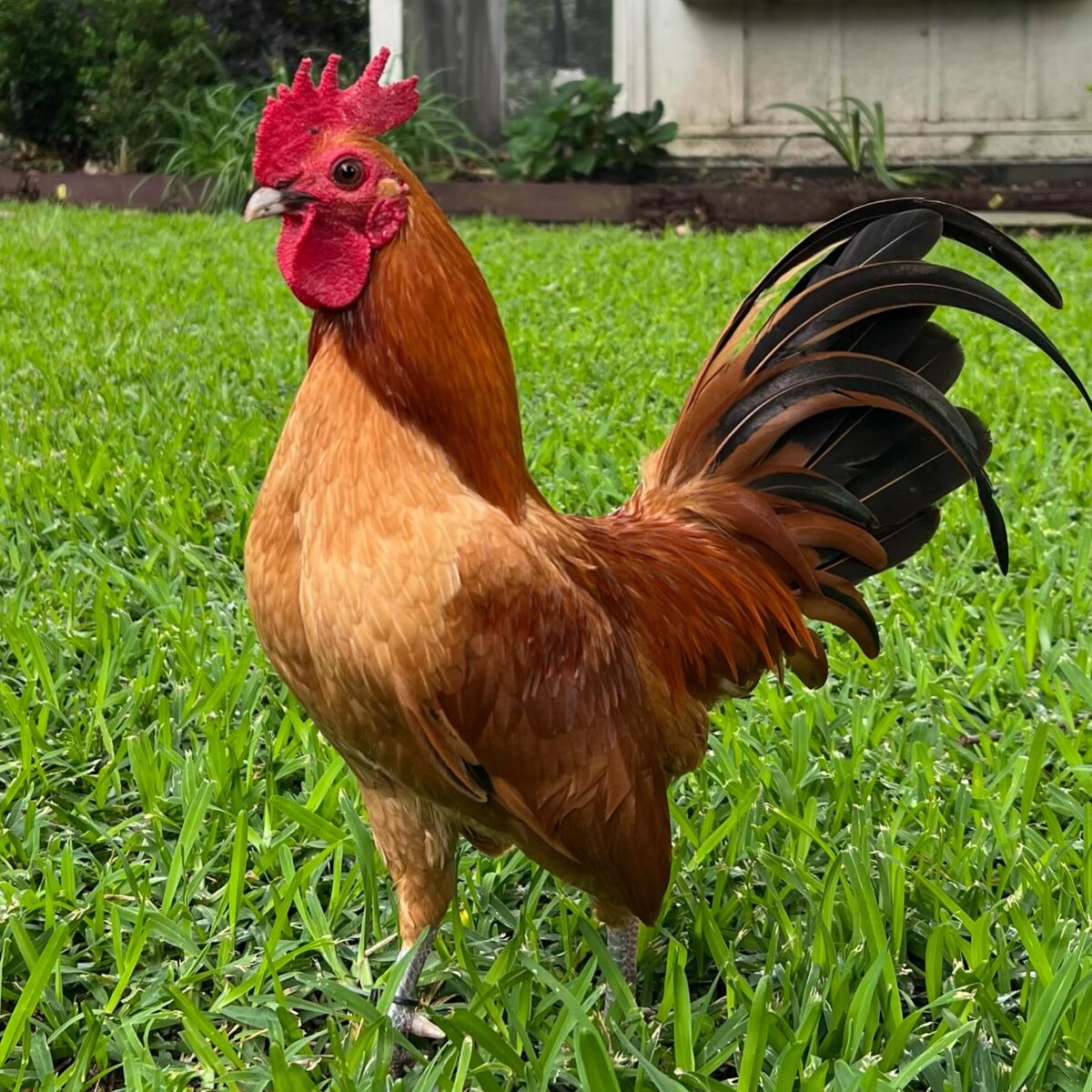
Golden Nankins are also known for fertility. They also make good layers, settlers, and mothers.
They start laying eggs within 24 weeks after hatching, yielding 80—100 small white eggs yearly.
Origin: England
Appearance: Small, golden-yellow body accompanied by a reddish tint
Traits: Friendly, calm, and ornamental
Uses: Brooding, light egg production
Ideal for: Backyard homesteads with small spaces
If not yellow or golden chickens, white and black chicken breeds can be the perfect alternative!
Final Thoughts
Yellow chicken breeds are the counterparts or alternatives to blue chickens and grey, brown, or red chicken breeds.
When choosing the chickens mentioned above, consider the bird size, shelter space, and purpose. For example, you can choose large breeds for dual purposes.
But bantams can offer great display and decoration with their appearance and eggs.



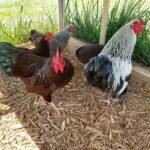
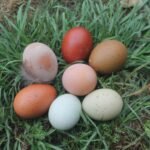
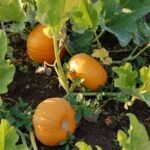

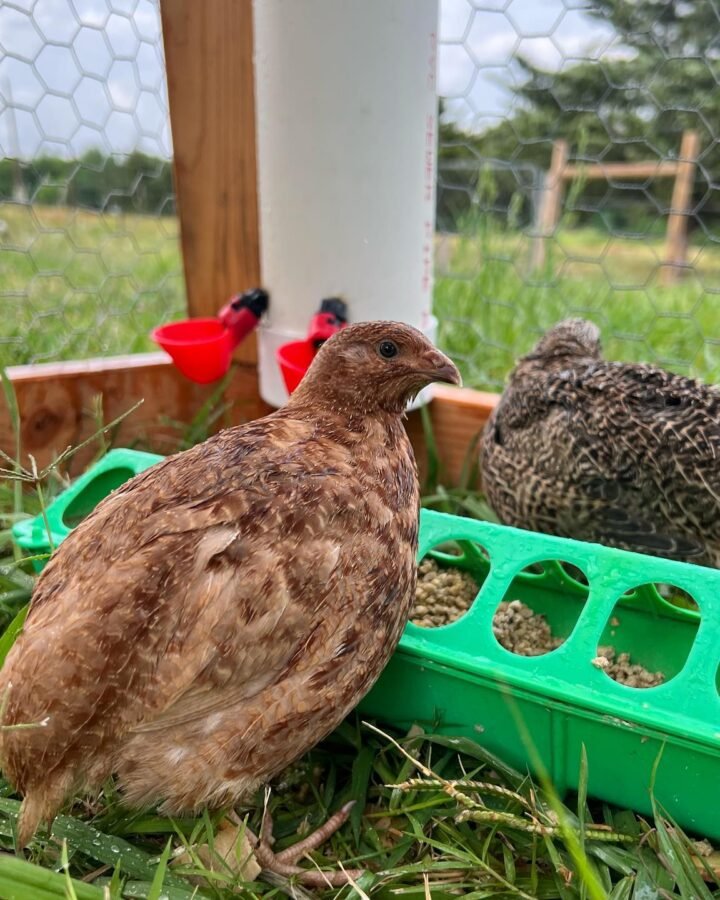

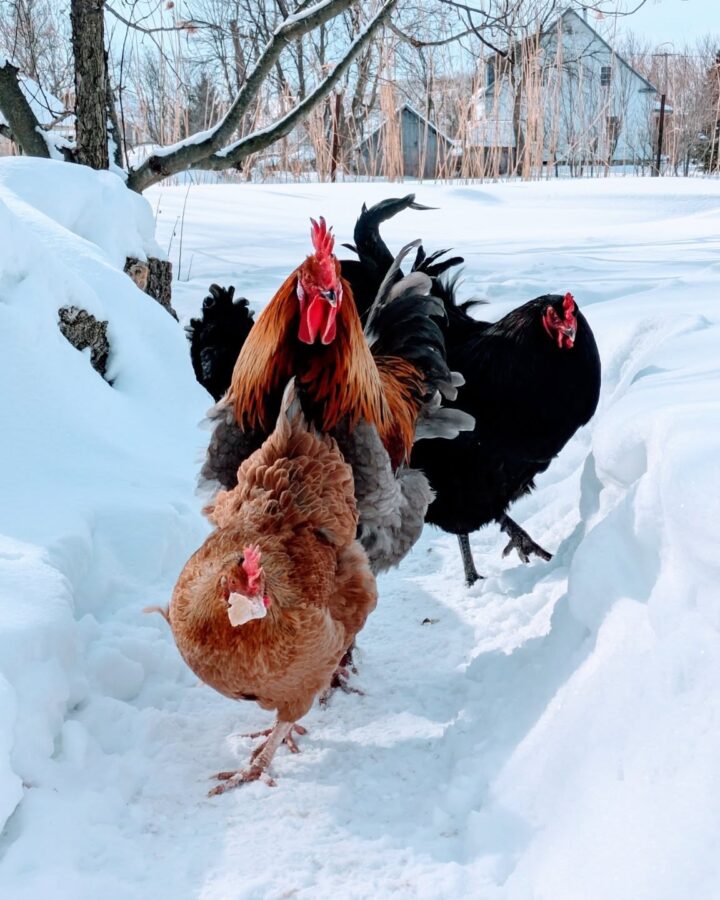
Leave a Reply